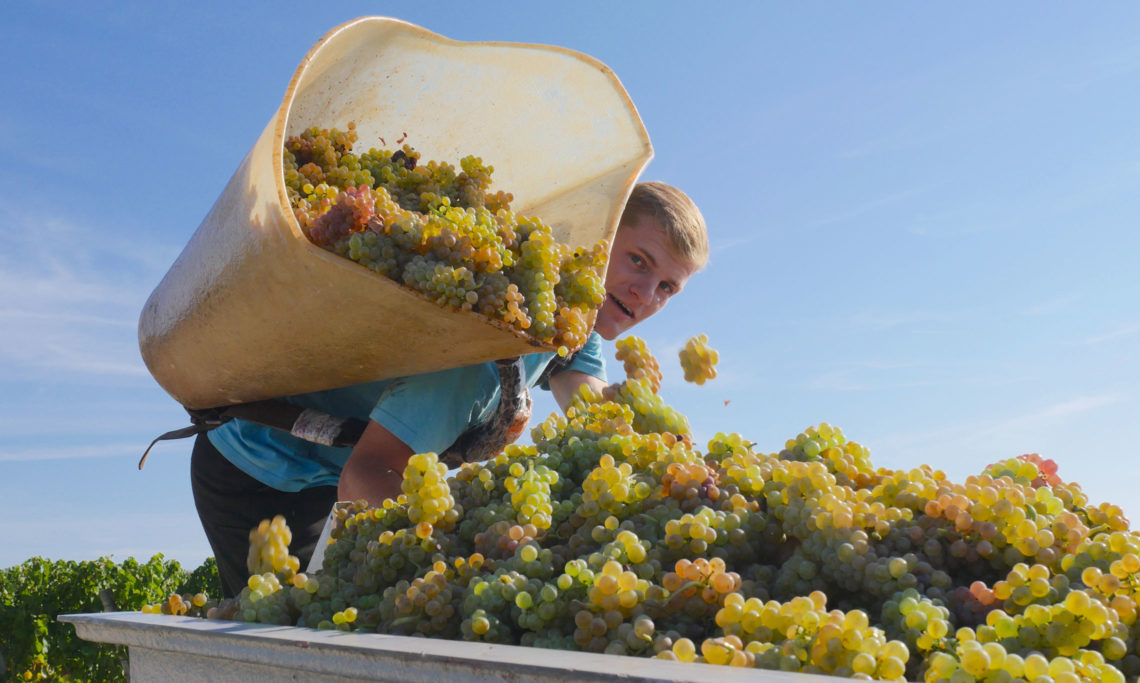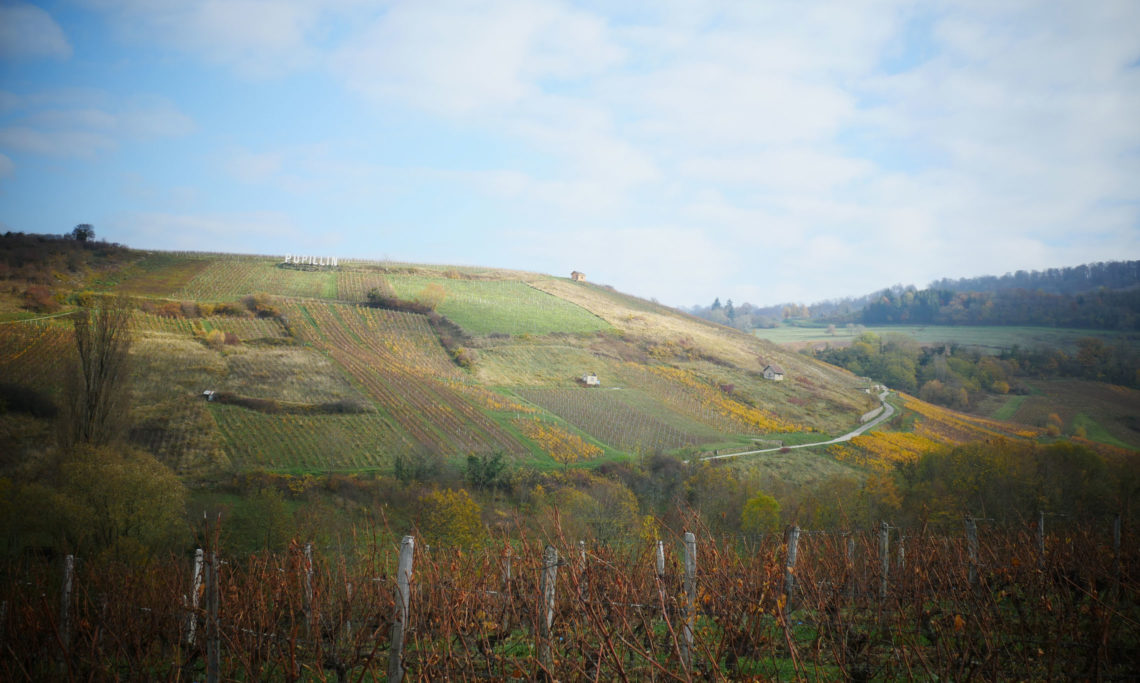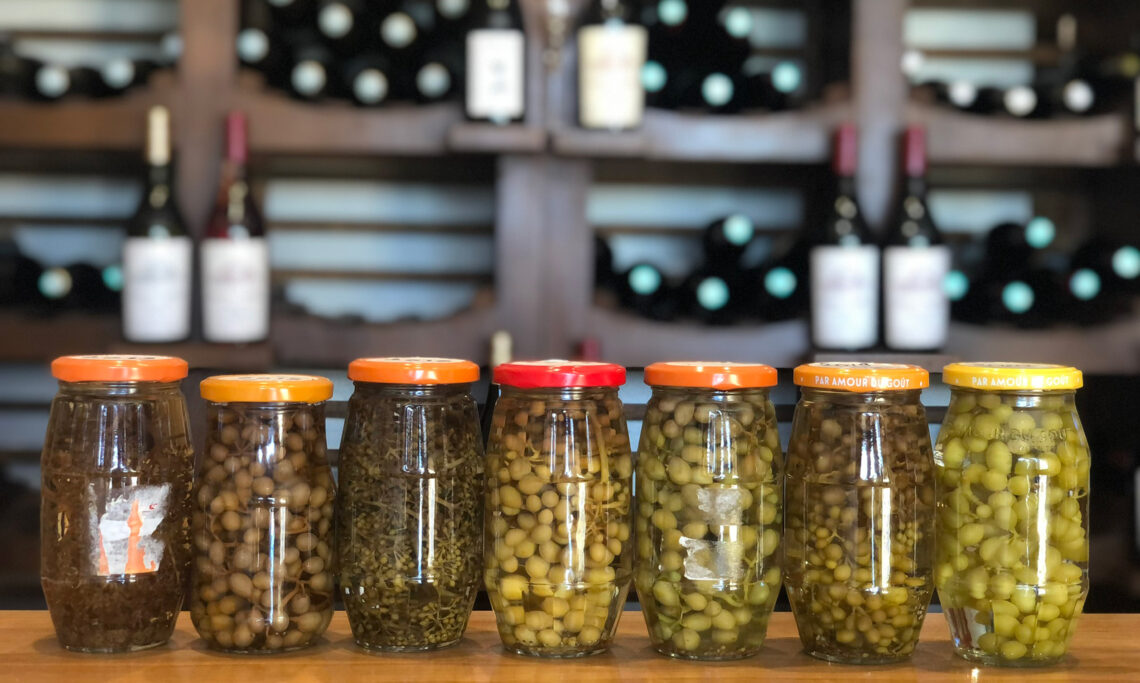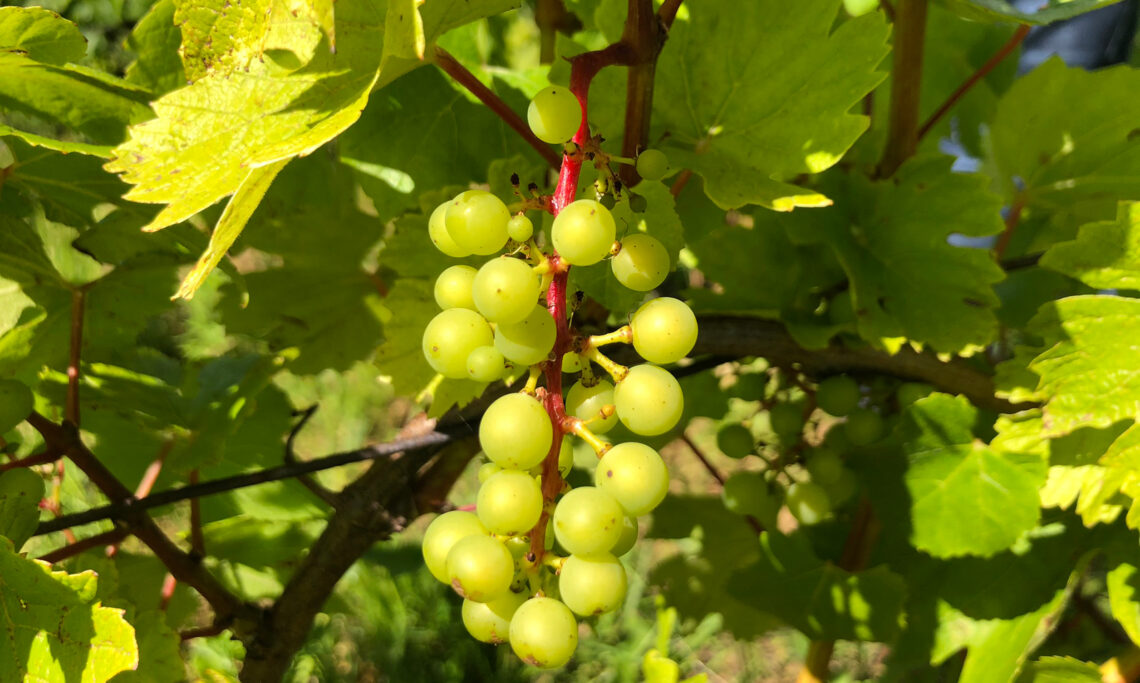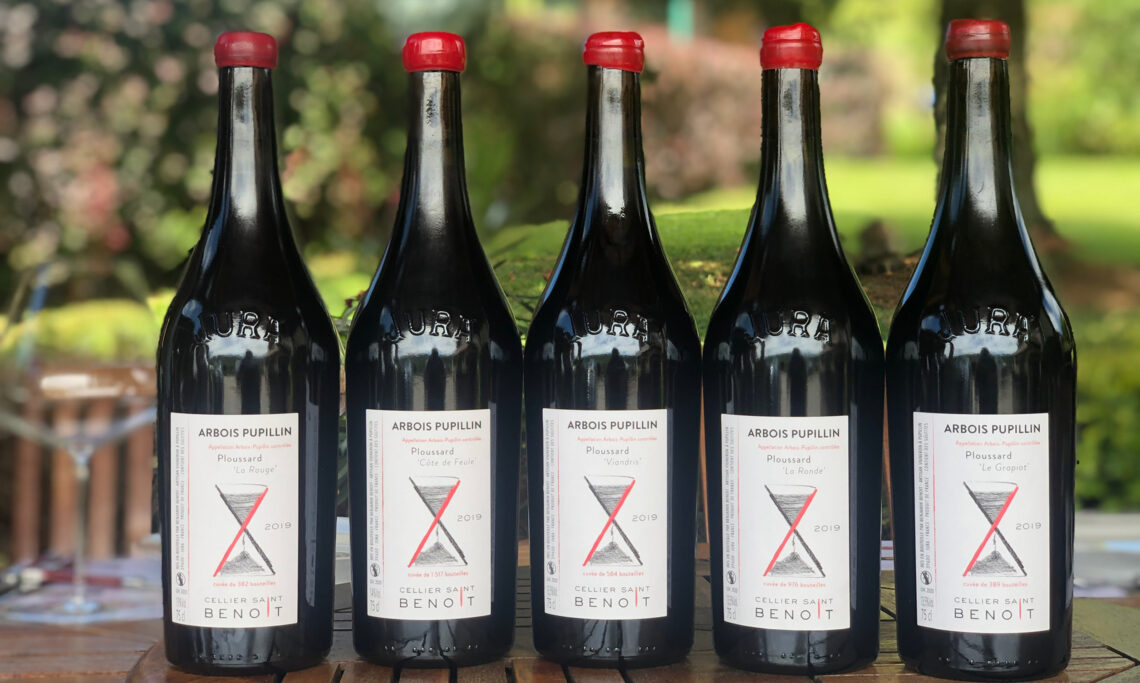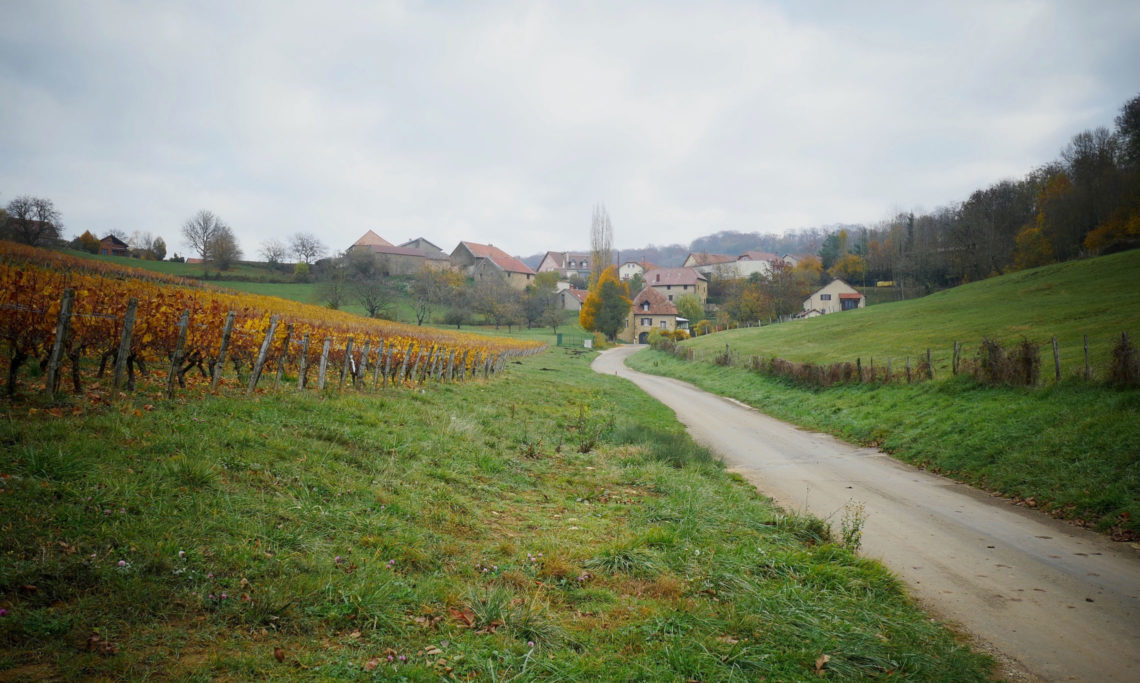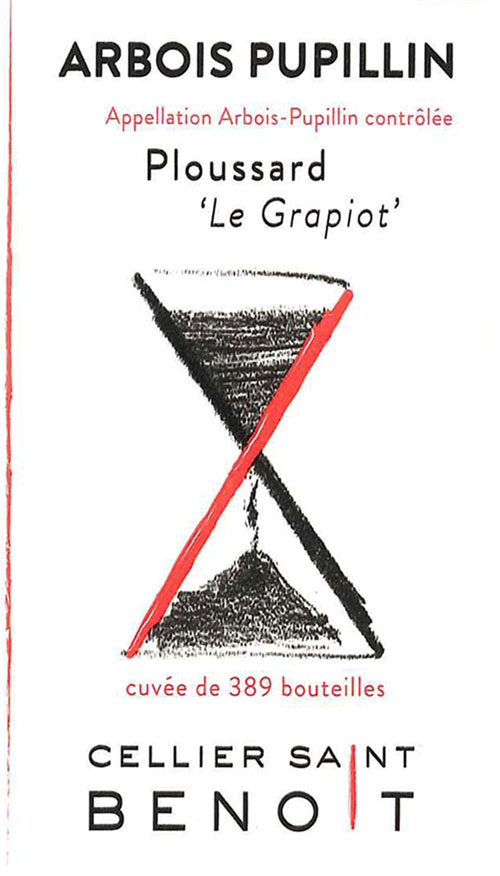Domaine Profile
- Location: Pupillin, Jura
- Size: 6.25 ha (15.44 ac)
- Varieties: Chardonnay, Savagnin, Pinot Noir, Ploussard, Trousseau
- Viticulture: Sustainable
- Vinification (whites): Whole clusters pressed in vertical oak press, 24-hour settling, ambient yeast fermentation and aging in older barrels.
- Vinification (reds): Ploussard destemmed with crible, 100% whole cluster for Pinot Noir and Trousseau. Ambient yeast fermentation in stainless steel or fiber tanks. Punched down at the end of fermentation, vertical oak pressing. Aged in tank and barrels. No fining, no filtration. Low SO2 after malo and at bottling.
In 2018, Amélie Berthaut made a point to introduce us to her apprentice, Benjamin Benoit. This was her way of saying, “watch this one,” and given her predilections, it meant he was hardworking and passionate. We turned to Benjamin and said hello. He said hello, then looked at his shoes —Amélie also likes humility. Benjamin’s shyness contrasted with his physique. Tall, fit, and blond, his jawline was so remarkably superhero-like, it was difficult to take one’s eyes away from it.
Working for Amélie also meant that Benjamin was on occasional loan to Nicolas Faure, and prior to Berthaut-Faure, he had worked with Charles Lachaux. That is as good as references get in Burgundy these days, and to cap things off, Benjamin was from Pupillin. We were definitely not going to let this one out of our sight. We looked forward to tasting his first wines with the 2020 vintage. But in 2019, his father passed away unexpectedly. Benjamin cut his apprenticeship short and rushed home to take care of the family domaine and make his first vintage. He was 23 years old.
Pupillin
At the entrance of Pupillin, a sign proudly declares the small village as the World Capital of Ploussard. The irony was intended: when the motto was created in 1991, no one cared about Ploussard.
Pupillin’s claim is objective, however. Most of the Jura is on grey marls from the Jurassic, a terroir where Savagnin and Chardonnay thrive. But in Pupillin, faults have exposed an unusually high proportion (60%) of older marls from the Triassic. These marls are ideally suited to the cultivation of Ploussard, which is why three quarters of the vineyards planted to the variety in the Jura are located in Pupillin and neighboring Arbois.
The majority of Ploussard bottlings are blends of several lieux-dits. The most exciting sound bite for Cellier-Saint-Benoit is Benjamin’s decision to bottle his five lieux-dits individually. In the kingdom of Ploussard, he has instantly become its champion.
History
Benjamin’s paternal great-grandfather founded the domaine, or rather the farm, because for the majority of domaines in the Jura at the time, grapes generated only part of the income. There were dairy cows as well, and their milk was sold for the production of Comté. It was only in the early eighties that Benjamin’s father was able to fully focus on the vineyards. He sold his grapes to the Fruitière Vinicole d’Arbois —fruitière is the local name for cooperatives. In 2002, he made his first domaine wine, a Vin Jaune. In 2004, he left the fruitière and vinified 2 of his 6 hectares. The remainder of the grapes were sold to other domaines or négociants.
Benjamin, who was born in 1995, was a mediocre student in middle school, and he did not like helping out in the vineyards either. “It was back-breaking work,” he says. “It was hot in the vineyards. I didn’t understand why I couldn’t just hang out with my friends at the local swimming pool.” Nor did Benjamin have a clue what he wanted to do later, and therefore, what to study. Frustrated, his father didn’t leave him a choice. He enrolled Benjamin in the technical high school in Beaune to study viticulture and winemaking. Astonishingly, after just a couple months, Benjamin was first in his class. “When we saw this,” his mother says, “we thought the school had sent us the grades of another child.”
“It was because everything had a practical implication,” Benjamin says. “Math, chemistry, technical subjects, they all had a direct consequence on the vines and the wines. Everything made sense.” Benjamin became obsessed. He shared a room at school with Guillaume Overnoy (Pierre’s great-nephew) and César Deriaux of Domaine de Montbourgeau. “While they slept, I studied late into the night with a little student’s lamp.”
After his baccalauréat, Benjamin stayed in Beaune to pursue a license (BTS) in viticulture and enology. His first internship, in 2014, was with Charles Lachaux. His second was with Amélie Berthaut. He was working in her Vosne-Romanée Les Petits Monts when he learned of his father’s passing.
We visited Benjamin in Pupillin to taste the baby 2019s and were very impressed. He was cautious about what he hoped to achieve. The vineyards had been farmed conventionally. There was so much to change. Like his father had, he had only vinified 2 hectares, a small production made even smaller by frost. It would not leave a lot of money for all of the necessary investments.
But on our visit in July 2020, we were astounded. Much like when he went to school in Beaune, Benjamin had gone all in. And it wasn’t just the land: his first vintage, now in bottle, was brilliant.
Viticulture
What does the catchall term of lutte raisonnée mean? For a young vigneron who has all the right intentions but who found himself so suddenly in charge of a domaine, it looks precisely like this:
Benjamin farms 5 of his 6.25 hectares without weed killers. The remainder is simply a question of time. For now, he can only afford one full-time employee and one seasonal worker. As far as treatments against disease go, Benjamin still allows himself the use of a chemical at flowering time. “We are in a humid place with lots of marl that retains humidity,’’ he points out. The Jura is already prone to frost and shatter, and the reality is that until he is established, he cannot afford to lose more crop to mildew. However, organic farming is his goal.
One hectare is treated by hand. The rest is treated with a chenillard, a lightweight track-type tractor. In order to avoid soil compaction, Benjamin’s goal is to use heavy tractors as minimally as possible —namely for plowing.
Plowing is limited to under the rows except in the steep Côte de Feule, where one out of two rows is plowed. Between the rows, Benjamin prefers natural grasses to cover crops. “Plants that grow naturally allow you to better assess the vineyards’ progress,” he says.
Because Benjamin started converting the pruning to Guyot Poussard in 2018, it is now pretty well established.
Hedging is mostly done by hand and very late in the season. Part of the Pinot Noir vineyards were left unhedged, with the canopy rolled into arches. Benjamin’s grandfather is in his eighties and doesn’t understand everything Benjamin does. The sight of unhedged vines is a particular eyesore for him. “Sometimes, he goes and trims them without asking me,” Benjamin laughs.
Massales are in the plans, as there are some great old vines, especially the old vine Chardonnay, a biotype you may have seen under the name Melon à Queue Rouge because of the red color of its stems.
Winemaking
Reds: The Ploussards are destemmed by hand using a traditional crible, a plank with holes over which the bunches are gently rubbed in a circular motion. (The Lafarges, who use a wicker crible to destem some of their vineyards, claim that it is much gentler than a mechanical destemmer.) Pinot Noir and Trousseau are 100% whole-cluster. All the reds are fermented with ambient yeasts in stainless steel or fiber tanks. There is no addition of sulfur during fermentation for the Ploussards and the Trousseau. Total maceration time ranges from 12 to 16 days. There are pump overs and no punch downs for the Ploussards. The Pinot Noir and Trousseau are punched down only towards the end of fermentation. All of the reds are pressed in a vertical oak press. The Ploussards are aged for six months in tank. The Pinot is aged in tank for six months, then in two used barrels for another two months. The Trousseau is aged for 80% for nine months in a stainless steel tank, the remainder in a used barrel. None of the wines are fined or filtered. Sulfur additions after malos and at bottling are modest.
Whites: Whole-clusters are pressed in a vertical oak press. After 24 hours settling, the juice is fermented with ambient yeasts and aged in older barrels. There is no addition of sulfur during fermentation on Viandris Cuvée 1938. Sulfur additions after malos and at bottling are modest.
Wines
-
Sparkling
-
White
-
Red

